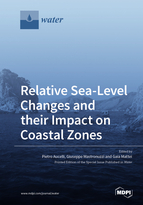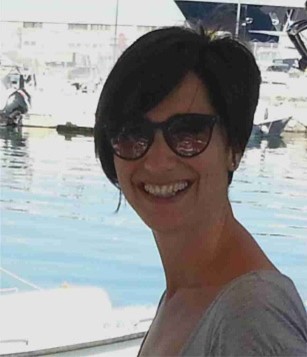Relative Sea-Level Changes and their Impact on Coastal Zones
A special issue of Water (ISSN 2073-4441). This special issue belongs to the section "Oceans and Coastal Zones".
Deadline for manuscript submissions: closed (30 July 2020) | Viewed by 58735
Special Issue Editors
Interests: geomorphology; climate change impacts; coastal processes; sea level changes and tectonics; quaternary geology; geological and geomorphological mapping; geographic information systems; risk assessment
Special Issues, Collections and Topics in MDPI journals
Interests: quaternary geology, geomorphology, geomorphological mapping, paleogeography, marine geology, coastal processes, sea-level changes and tectonics, wave hydrodynamics
Interests: coastal processes; sea-level changes and tectonics; geoarchaeology; geomorphology; paleogeography; marine geology; geographic information systems; vulnerability assessment
Special Issues, Collections and Topics in MDPI journals
Special Issue Information
Dear Colleagues,
In the last centuries, the study of sea-level changes along the world’s shores has been a primary scientific focus in climate change studies, but also for scientists that would explore past landscape evolution, geomorphological processes, human impacts, and system responses. The relative variation in the sea level derives from the sum of global, regional, and local processes. All these processes are spatially and temporally variable and cause complex sea-level changes at both regional and local scales. A multidisciplinary approach addressed to palaeo-sea-level reconstructions at regional and local scales is the best method to understand the role of natural and anthropogenic forcing in the landscape evolution, as well as to discover the past human adaptions to natural modifications of the landscape. Recently, the integration between geo-acoustic and optical indirect methods has allowed for the high-resolution mapping of wide coastal areas and seabed morphologies by combining remote and direct data. These transdisciplinary studies are the modern approach to palaeo-landscape and palaeo-sea-level reconstructions, acquiring a large amount of four-dimensional—3D points and time—data that, in the case of archaeological sites, also have historic value in terms of cultural and natural heritage. High-resolution remote sensing techniques provide multiscale and multitemporal datasets about landscape reconstruction and its evolution over the last millennia; furthermore, these methods are the most precise technique to evaluate the local vertical ground movement (VGM) that is a primary forcing factor in sea-level oscillations in the medium/short term.
Definitely, investigating these regional and local patterns is mandatory to reconstruct a possible scenario of the relative impact of the sea level rise and to prepare the adaptation of coastal communities threatened by future climate changes.
The aim of this Special Issue is to collect contributions that discuss methodological and multi-disciplinary approaches to studying regional and local coastal modification in relation to relative sea level changes in the past and the present to hypothesize future trends.
Themes of this Special Issue can include the following:
- Sea-level changes and human activities;
- Palaeo-environmental reconstruction in coastal areas;
- Geomorphological, stratigraphical, and archaeological data as markers in sea-level studies;
- Coastal geomorphology and sea-level changes;
- Underwater archaeology;
- Advances in methodology and applications for sea-level studies;
- A high-resolution 3D model of underwater landscapes;
- VGM in coastal areas measured by remote sensing techniques;
- Cases of historical and recent coastal modification.
Dr. Pietro Aucelli
Prof. Giuseppe Mastronuzzi
Dr. Gaia Mattei
Guest Editors
Manuscript Submission Information
Manuscripts should be submitted online at www.mdpi.com by registering and logging in to this website. Once you are registered, click here to go to the submission form. Manuscripts can be submitted until the deadline. All submissions that pass pre-check are peer-reviewed. Accepted papers will be published continuously in the journal (as soon as accepted) and will be listed together on the special issue website. Research articles, review articles as well as short communications are invited. For planned papers, a title and short abstract (about 100 words) can be sent to the Editorial Office for announcement on this website.
Submitted manuscripts should not have been published previously, nor be under consideration for publication elsewhere (except conference proceedings papers). All manuscripts are thoroughly refereed through a single-blind peer-review process. A guide for authors and other relevant information for submission of manuscripts is available on the Instructions for Authors page. Water is an international peer-reviewed open access semimonthly journal published by MDPI.
Please visit the Instructions for Authors page before submitting a manuscript. The Article Processing Charge (APC) for publication in this open access journal is 2600 CHF (Swiss Francs). Submitted papers should be well formatted and use good English. Authors may use MDPI's English editing service prior to publication or during author revisions.
Keywords
- Sea-level changes
- Coastal processes
- Landscape evolution
- Vertical ground movements
- Direct and indirect surveys
- Geoarchaeology
- Paleo-environmental reconstructions
- Geohazards
- Geomorphological mapping
- Sea-level proxies.








